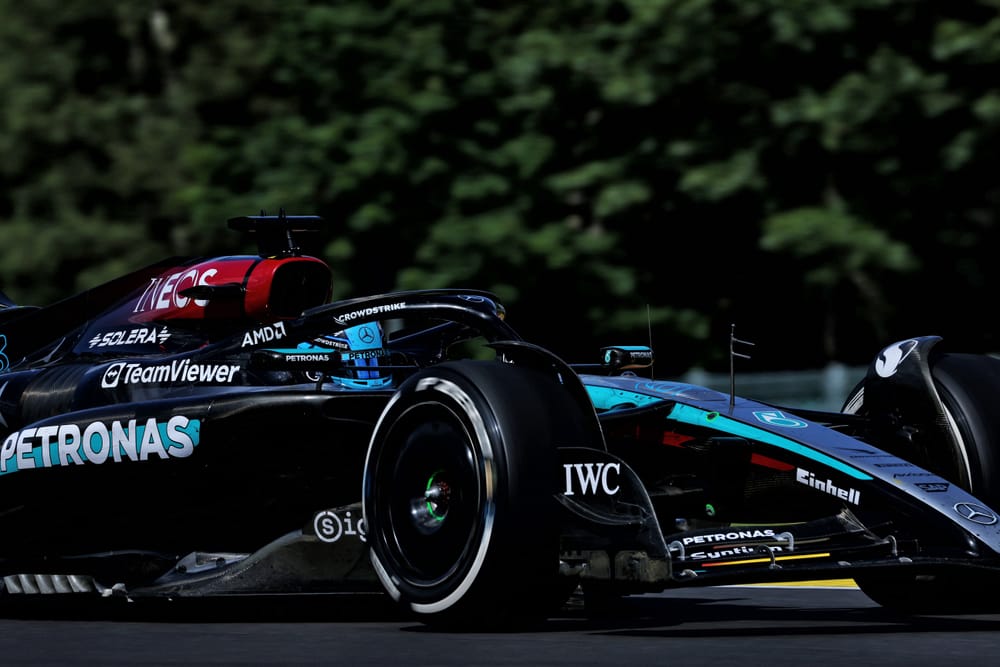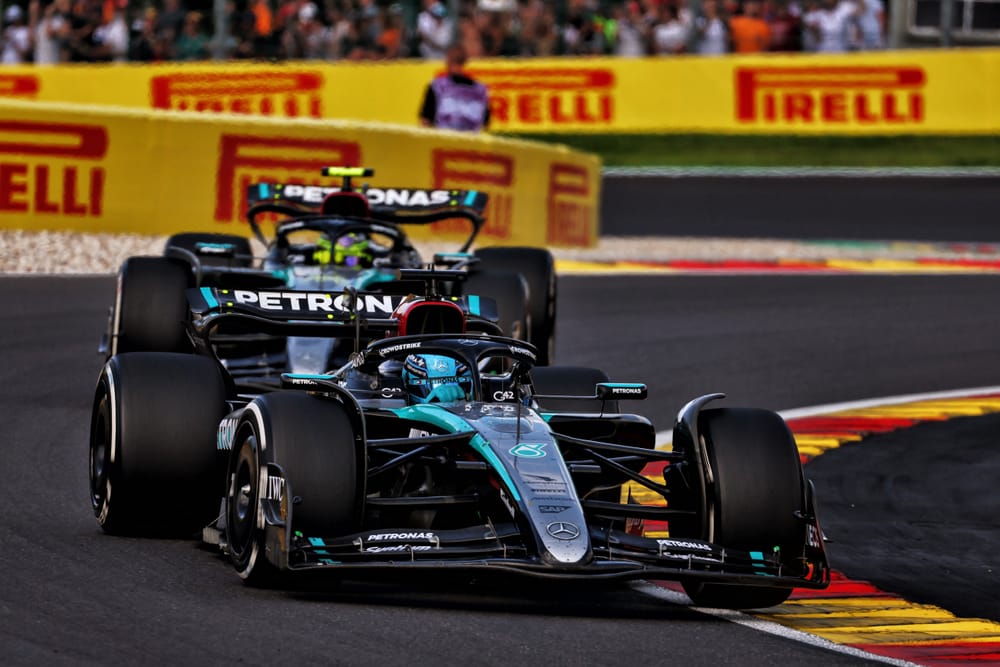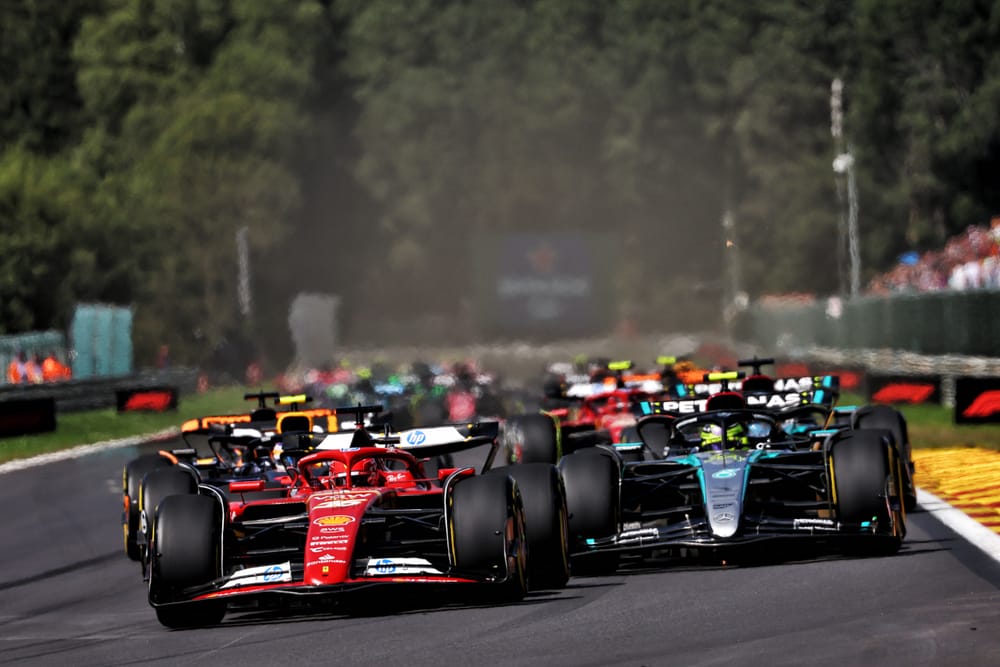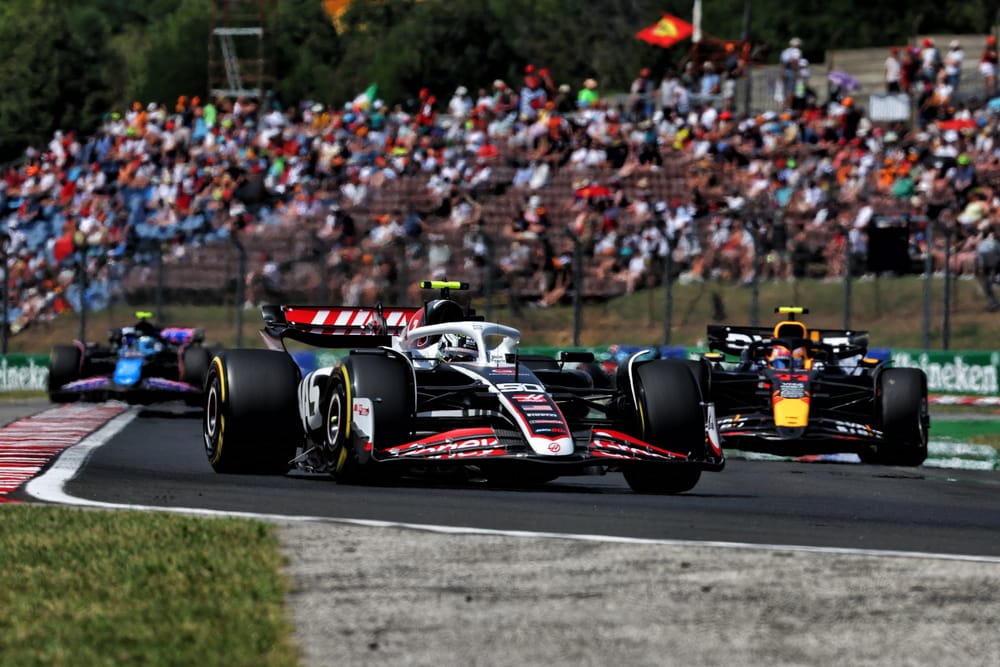Up Next

F1's Belgian Grand Prix wasn’t ever going to be a one-stop race. But George Russell, who was probably set to finish around fifth in the normal two-stop running of his race had a feeling.
It came to him after the second pitstops of Lewis Hamilton, Charles Leclerc and Oscar Piastri had left him in an out-of-sequence lead.
“It was weird,” he reported. “Suddenly the tyres and the car felt so good. I got into this groove. Once I was in the lead, no backmarkers or other cars in front, it kind of felt like you were driving in the simulator. I was watching the gap to Lewis and the rate he was catching me and I just thought there’s no reason why we can’t stay out and try to make it work.”
Oscar Piastri had felt it too - in the five laps he ran in the lead after the stops of Hamilton and Charles Leclerc ahead of him. His hard tyres were 15 laps old as the Merc peeled off to finally give him clear air, but the car felt fantastic. Even as he ran another five laps, running around 4-5s ahead of Russell. But he had more to lose than George.
He and McLaren believed he was going to be fighting Hamilton for the win on a standard two-stopping race, once he’d used his newer tyres to pass Leclerc. Russell, on the other hand, was set to finish fifth whether he stopped once or twice according to the Merc strategy numbers. It was remarkable they were even discussing it, given that in the briefing they’d been comparing a two stop to a three. Never a one stop.
So neither Piastri nor McLaren considered the one-stop which Russell pushed his team towards. Had McLaren done so, it’s difficult to envisage how Piastri might have lost. That’s a hindsight observation, of course.
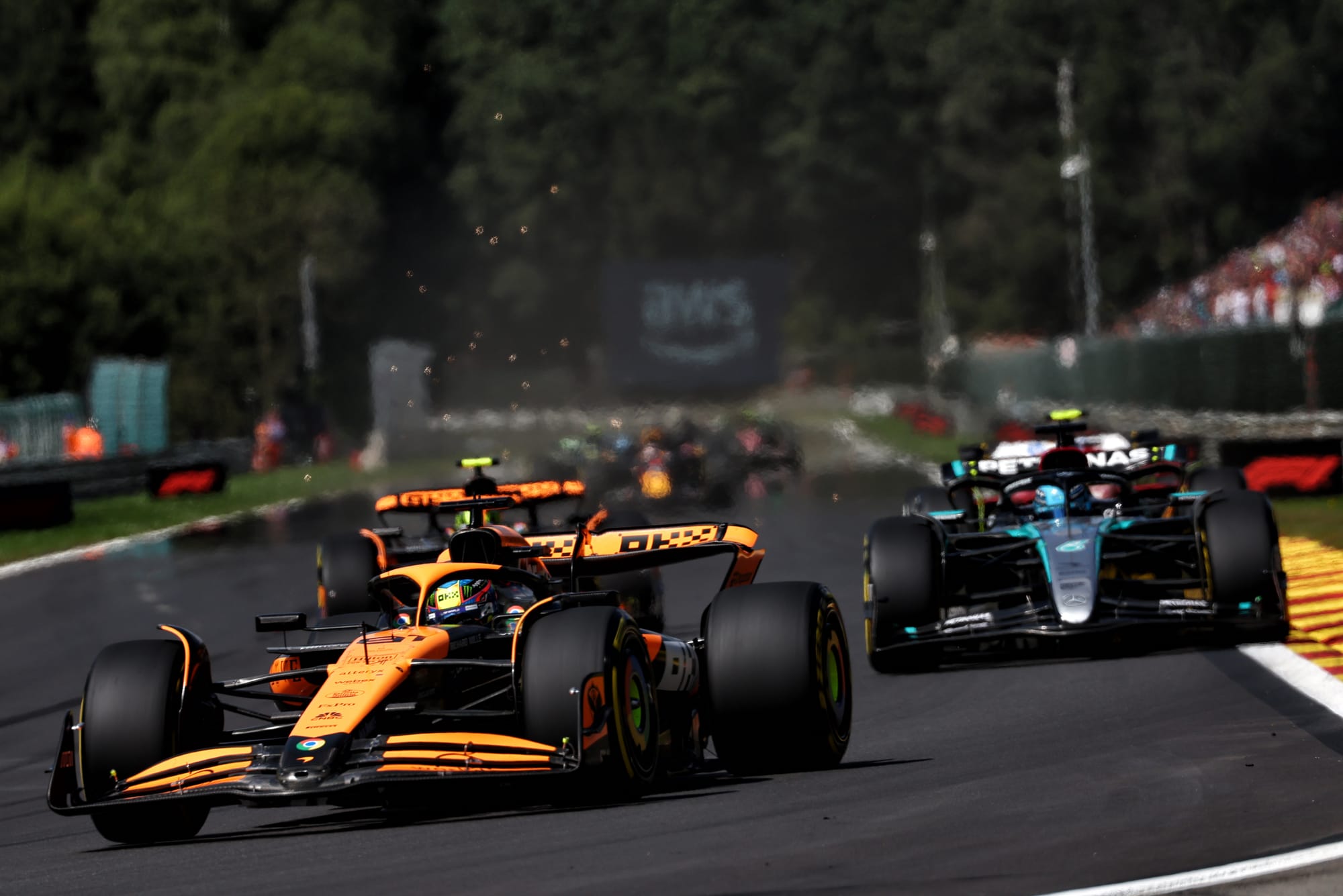
Well actually, he might have lost the same way Russell did: by being disqualified for being 1.5kg underweight at the end. Because no-one was expecting a one-stop to work – far too much tyre deg to be feasible was the universal assessment – nobody had calculated weight based around worn-out one-stopping tyres.
Given that it was a race run at a very hard pace on a track which “just got grippier and grippier,” as Russell described it, and with no safety cars, the weight was very marginal. How feasible is it that each one-stopping tyre would weigh 0.375kg less than a fresher two-stopping tyre (0.375kg x 4 = the 1.5kg they were under)? Totally feasible.
So what was a bewildering race became even more so after Russell was duly disqualified, promoting his two-stopping Mercedes team mate Lewis Hamilton to the official victory. Both had driven terrific races, Hamilton charging from the front, passing Leclerc on the third lap after aggressively passing and fending off Sergio Perez through the opening few corners, holding great pace once he hit the front.
For his part, Russell, while not as outright quick this weekend as Hamilton, found that amazing rhythm and then beautifully judged how to defend against his newer-tyred team mate once he’d got to within his DRS reach with four laps to go.
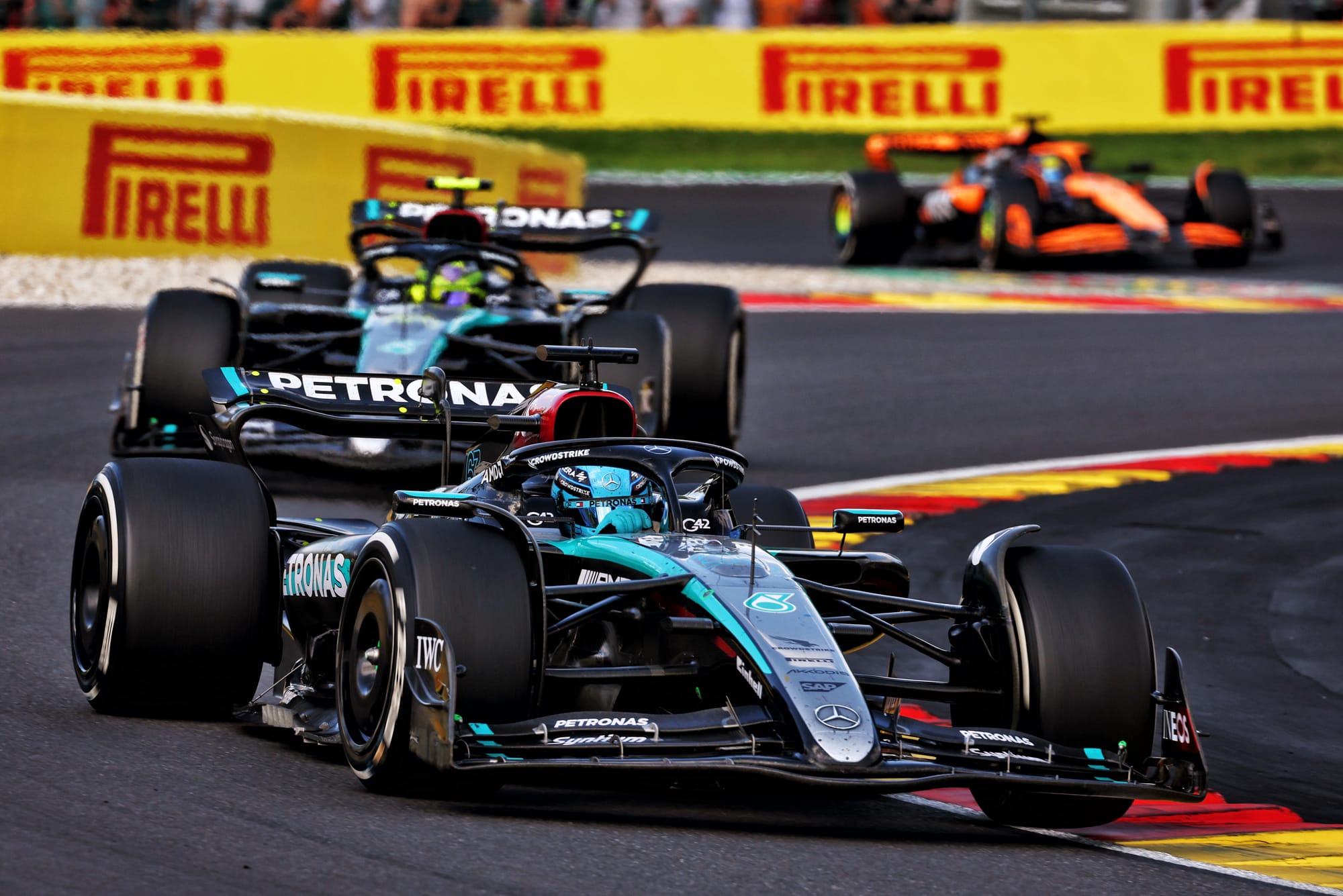
He had to be perfect in the traction zones and to judge when to use his battery. Might that 1.5kg have helped him? It would be worth around 0.06s per lap, so a little. But probably not decisively. It was the strategy which was decisive.
There were two key factors which so changed the expected optimum strategy. 1) The tyre deg was way better than forecast but the cars worked so much better in clear air than dirty, more so than usual, both factors favouring the one-stop. 2) Overtaking was much more difficult than expected.
Why tyre deg wasn't as intense as expected
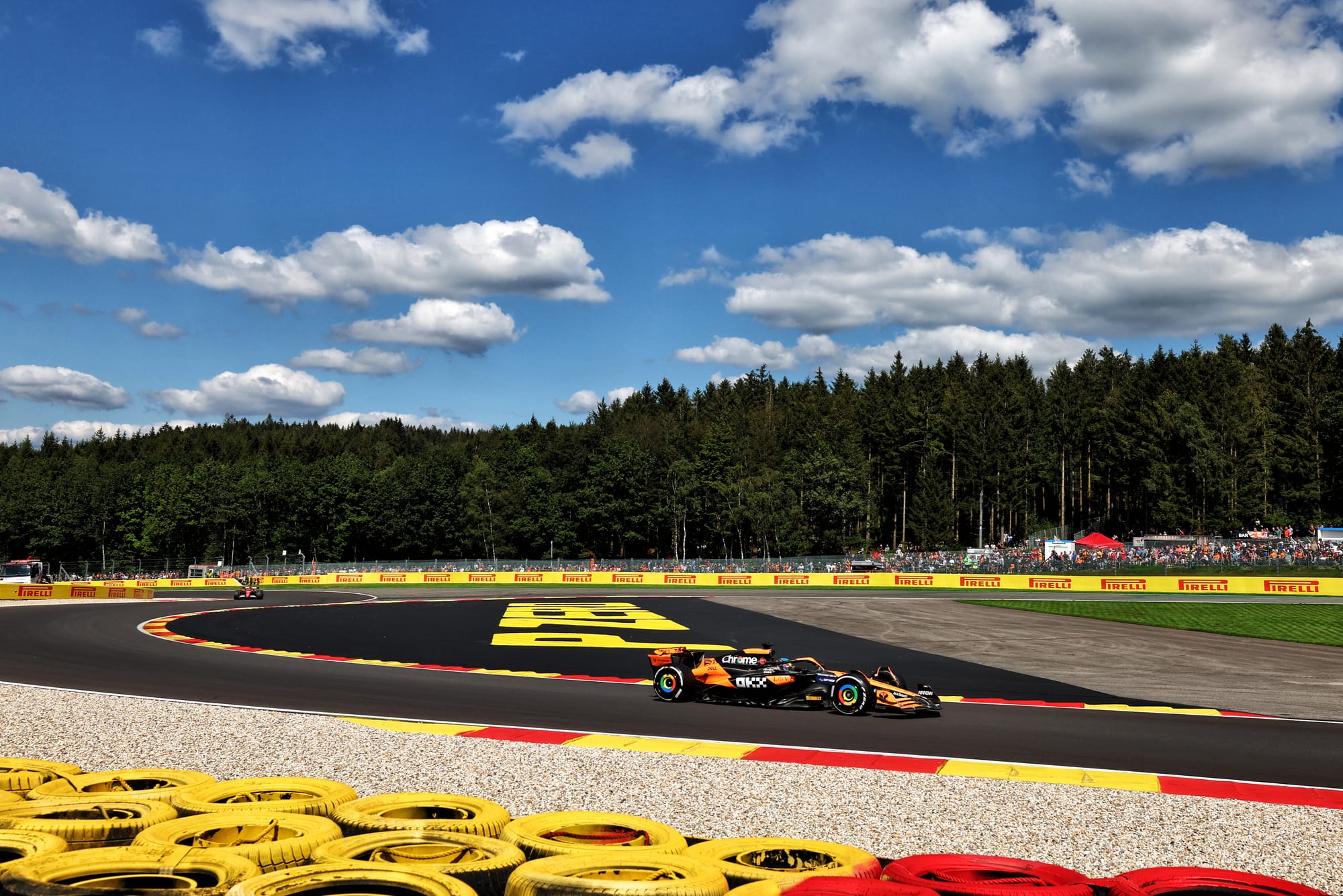
Much of the track was resurfaced with a very high-grip material. But all of sector 2 (ie the fast, long duration turns) was still the old tarmac, with a much lower level of grip. On Friday the new tarmac of the rest of the lap had made the deg higher than last year. On Saturday there was no dry running. So strategic choices were made based on Friday’s tyre data.
But Friday turned out to be not representative at all. Tyre behaviour is always complex but the circumstances of Spa made it particularly so. For several reasons.
As we explained in the qualifying piece yesterday, sometimes too much grip can make tyre degradation worse. Counter-intuitively. Sometimes limiting the deg is not just about the usual minimising the slip of the tread by applying more wing and thereby keeping control of the tread temperature. Sometimes it’s a different mechanism and it’s happened at Spa before.
The relentless long duration fast corners of that middle sector can over-stress the core of the tyre, leaving it insufficiently strong to properly support the tread and the tyre just becomes steadily slower as it loses much of its elasticity. That’s why Red Bull’s high-downforce wing wasn’t necessarily going to give better tyre deg than McLaren’s less powerful wing. But the less grippy old surface of the part of the track which imposes the high loads probably helped everyone.
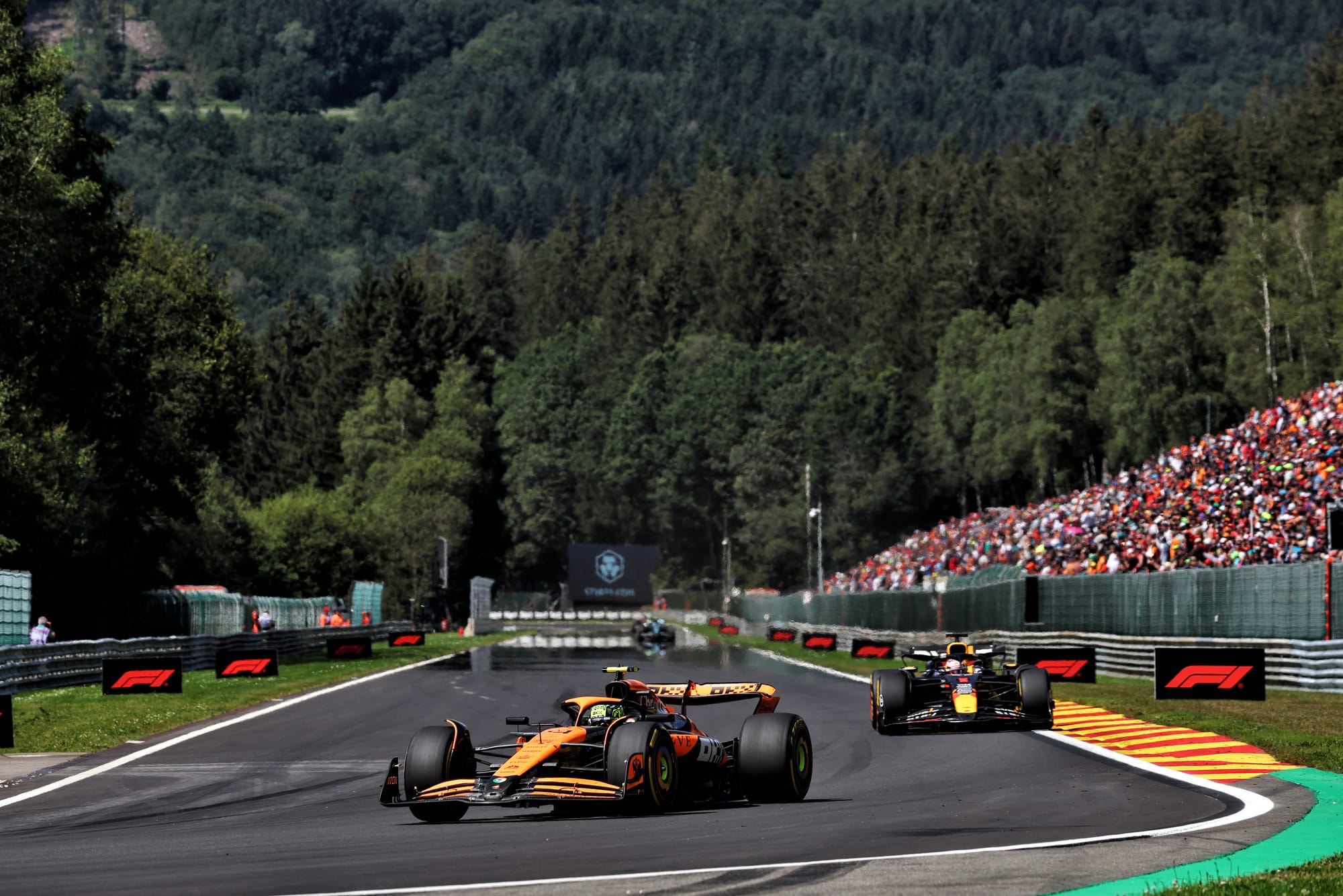
Why had deg been so much higher on Friday? It would take a tyre engineer some days of data analysis to properly answer that. But perhaps the new surface on the rest of the lap (including the slow turns of The Bus Stop, La Source and Les Combes), where the more conventional deg mechanism applies, was less grippy than it subsequently became and as it gripped up through the race it had a less aggressive impact on tread temperatures.
Both mechanisms were probably playing out at different parts of the track. With differing and unexpected consequences on race day. Aside from reducing the degradation rate, what that also did was equalise the performance of the cars. Over the lap there was not a great deal of difference between the Mercedes, McLaren, Ferrari and Red Bull despite their quite different strengths and weaknesses.
The McLaren may have been the quickest, but the Mercedes had track position. Both were slightly faster than the Ferrari and Red Bull. But, as Max Verstappen said after finishing an unremarkable fifth from his penalised P11 starting slot, “You get stuck in the DRS train without any more pace than anyone else on a track where tyre life and overheating is quite crucial. If you start P1 [my] race would have probably looked very different and we could have challenged for the win. You have a much better opportunity to optimise your pace and tyre life.”
“Clean air is king,” said Piastri to his engineer after he was able to increase his pace by 1s per lap once he was at the front.
There was another less important tyre influence on strategy: the medium tyre was nowhere near as good as the hard. Red Bull had saved only one set of hards, everyone else two. Which made Verstappen’s second stint a bit tame, trying but not succeeding in passing the old hard-tyred Russell and then falling away before pitting. But as Piastri pointed out, with the correct strategy you only needed one set of hards.
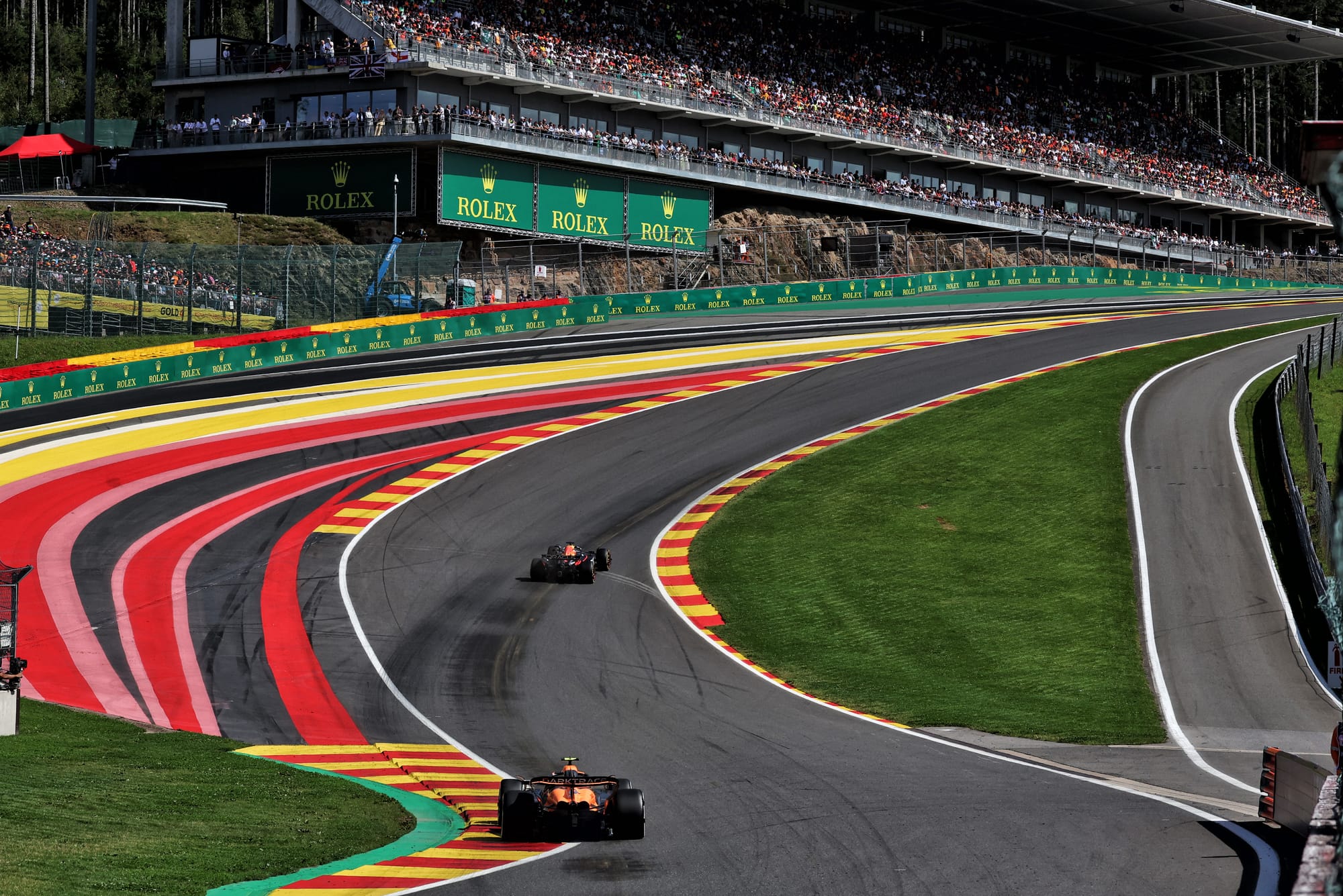
Despite such a low-key weekend, Verstappen still extended his points lead over Lando Norris whose race was severely compromised within seconds of the start. Out-accelerated by Piastri, he seemed to lose reference of where his car was as he ran wide on the exit of La Source, dropping his outer wheels into the gravel and instantly being zapped by Russell and Carlos Sainz’s Ferrari.
That put him in that long DRS train headed by the struggling Perez, losing tyre performance along the way. Running a long first stint to get a tyre offset only succeeded in Norris being jumped by Verstappen without being able to usefully use his newer tyres in the next stint, stuck still in the same train as Verstappen but now behind him. Which is where he finished, sixth across the line.
Sainz was the only one of the top 12 to start on the hard rather than the medium. It was a great tyre and his pace on it was strong as he hit the front after the medium runners pitted ahead of him.
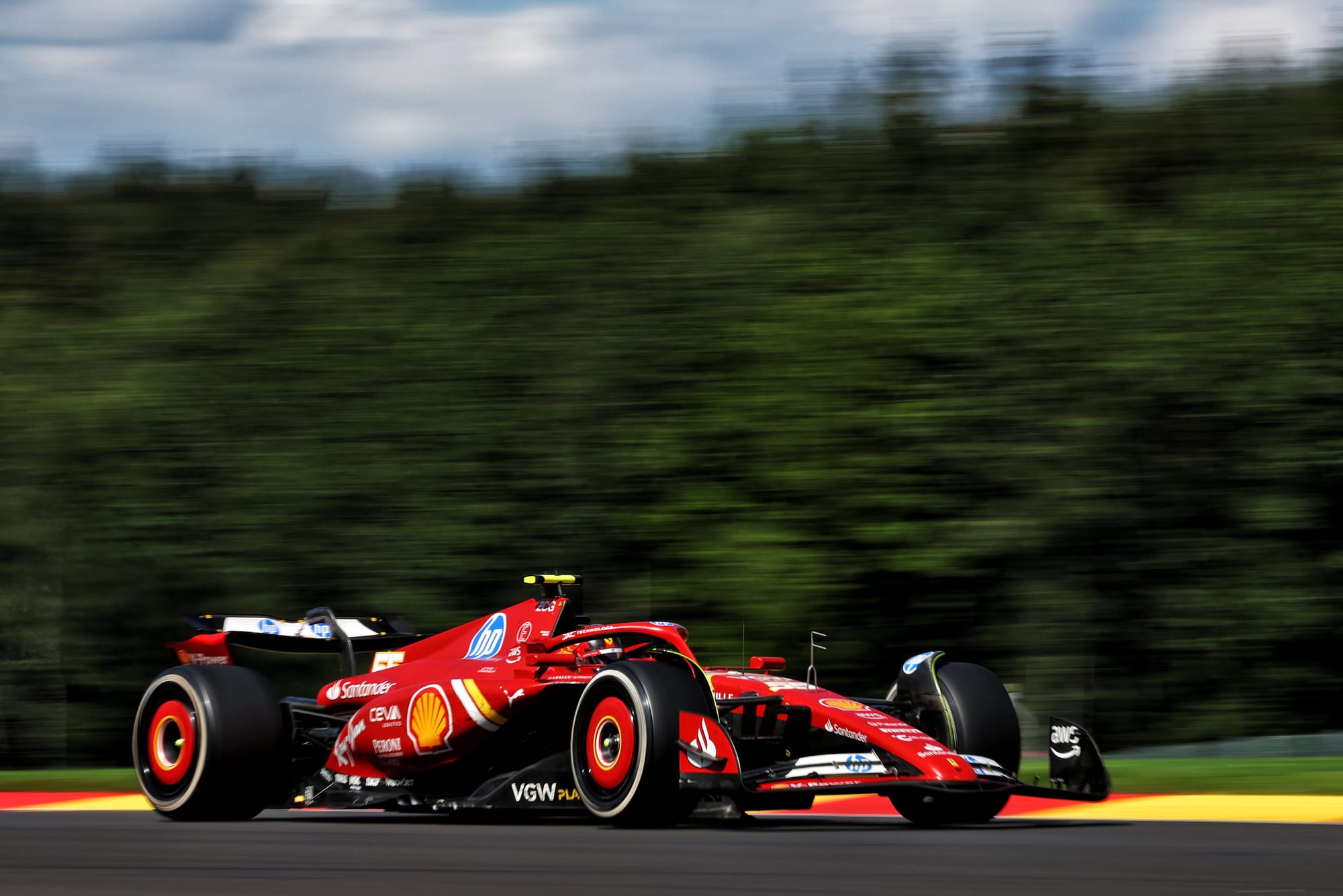
That pace collapsed as soon as he switched to the medium and he was in again after just eight laps on it. It was a strategic no-man’s land. In hindsight he could surely have run much longer than 20 laps on his original set of hards. That middle medium stint lost him so much time he was 10s behind Norris’ seventh place at the flag.
That was the cascading effect of his qualifying only seventh, although he did put a pass on Perez who had a terribly lacklustre race to eighth from the front row. Checo was far enough ahead of the battling Fernando Alonso and Esteban Ocon that he was able to make a late third stop for a set of fresh tyres with which to deprive Norris of the fastest lap point.
Why overtaking was tougher than expected
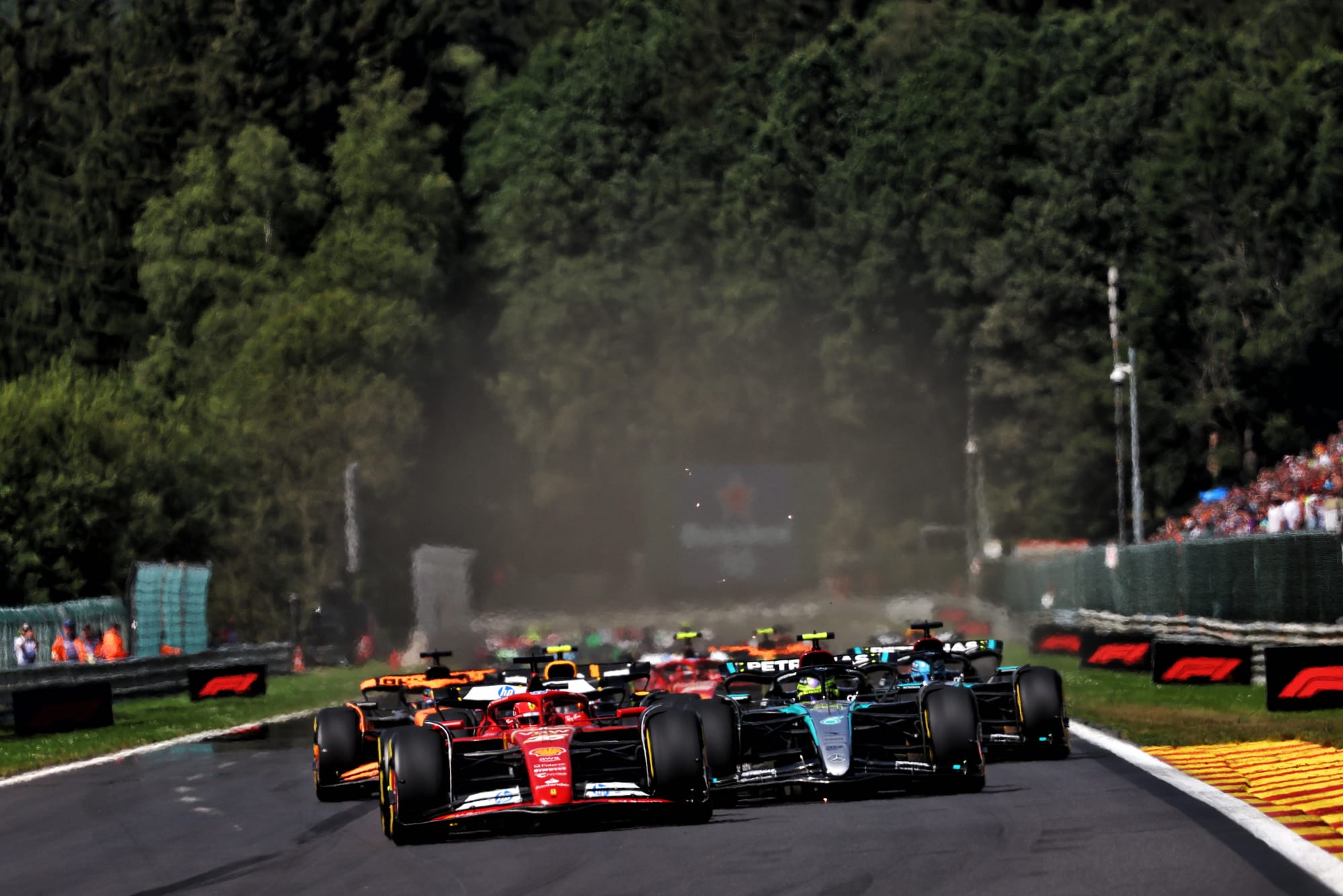
The DRS zone up the Kemmel Straight before the braking zone for Les Combes had been reduced by 75 metres from last year. It made passing much more difficult.
There were a few standard ‘pass on the straight’ moves but they were far less common than before and you really needed to commit to completing the move in the mid-part of Les Combes itself, around the outside of the right-hander. Like Piastri did when he passed Leclerc shortly after the respective second stops.
That looked set to put Piastri on-course to fight out the win with Hamilton. He was on tyres four laps newer and the McLaren looked a marginally faster car. His locking up into his pitbox not only gave his front jack man a jolt but lost him a couple of seconds. That might have been decisive. But maybe not.
Russell’s race engineer Marcus Dudley sat on the opposite side of the garage divider to Hamilton’s Pete Bonnington as they were each trying to help their man win. There were no team orders. They were free to race.
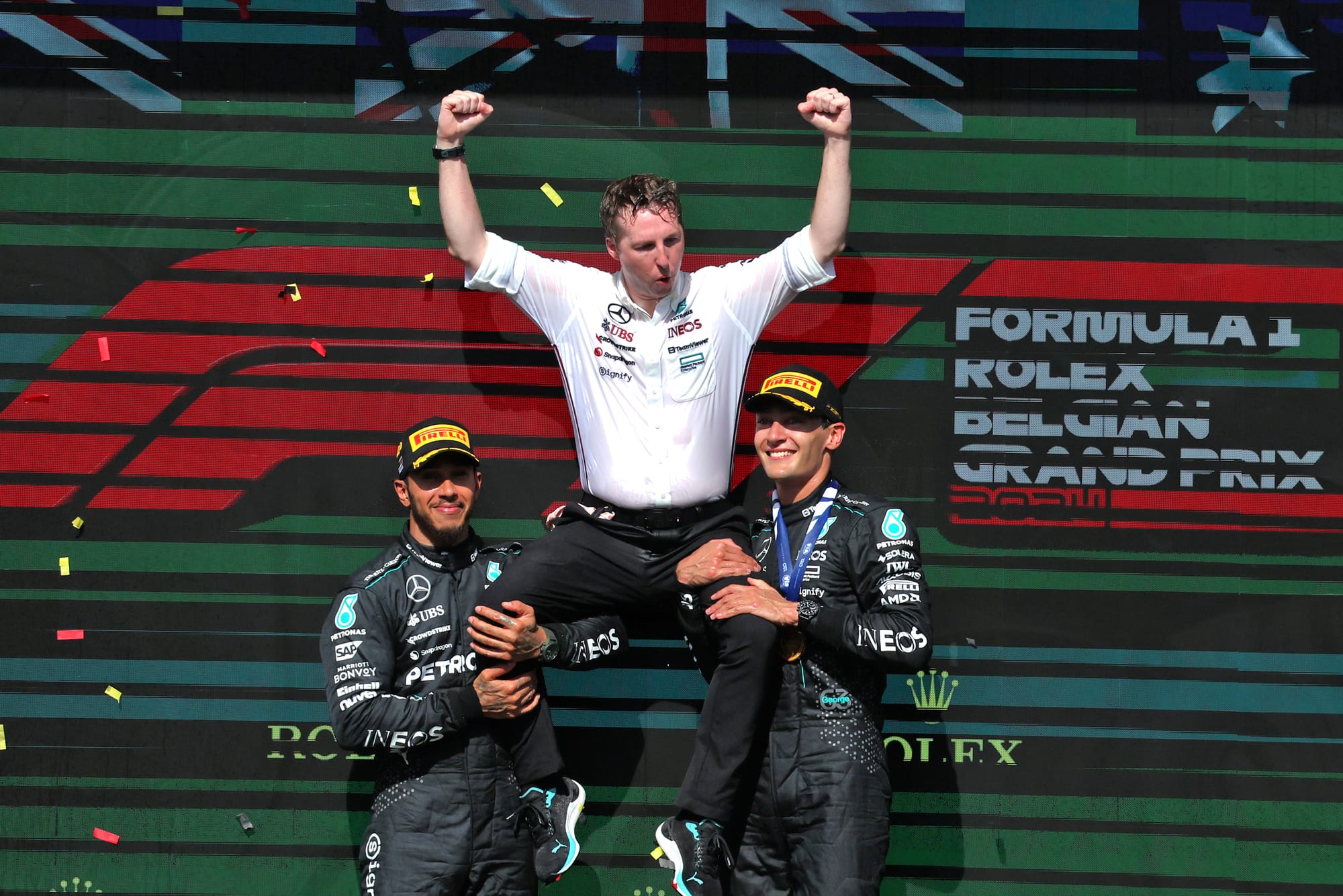
Getting into Russell’s DRS zone with four laps to go at Spa would in former times have made it a formality for Hamilton to pass. But with the shortened DRS zone he didn’t seem willing to commit to the risky manoeuvre, once it became clear how perfectly Russell was defending. The slightest delay and Piastri – who was into Hamilton’s DRS by the final lap - would have been through.
Hamilton had informed the team his tyres were fine and that he’d have preferred to stay out longer. But those timings were logically based on covering off Leclerc (who finished a flawless fourth in a Ferrari not quite on the pace) and Piastri. Just not against some miraculous tyre-whispering one-stop.


